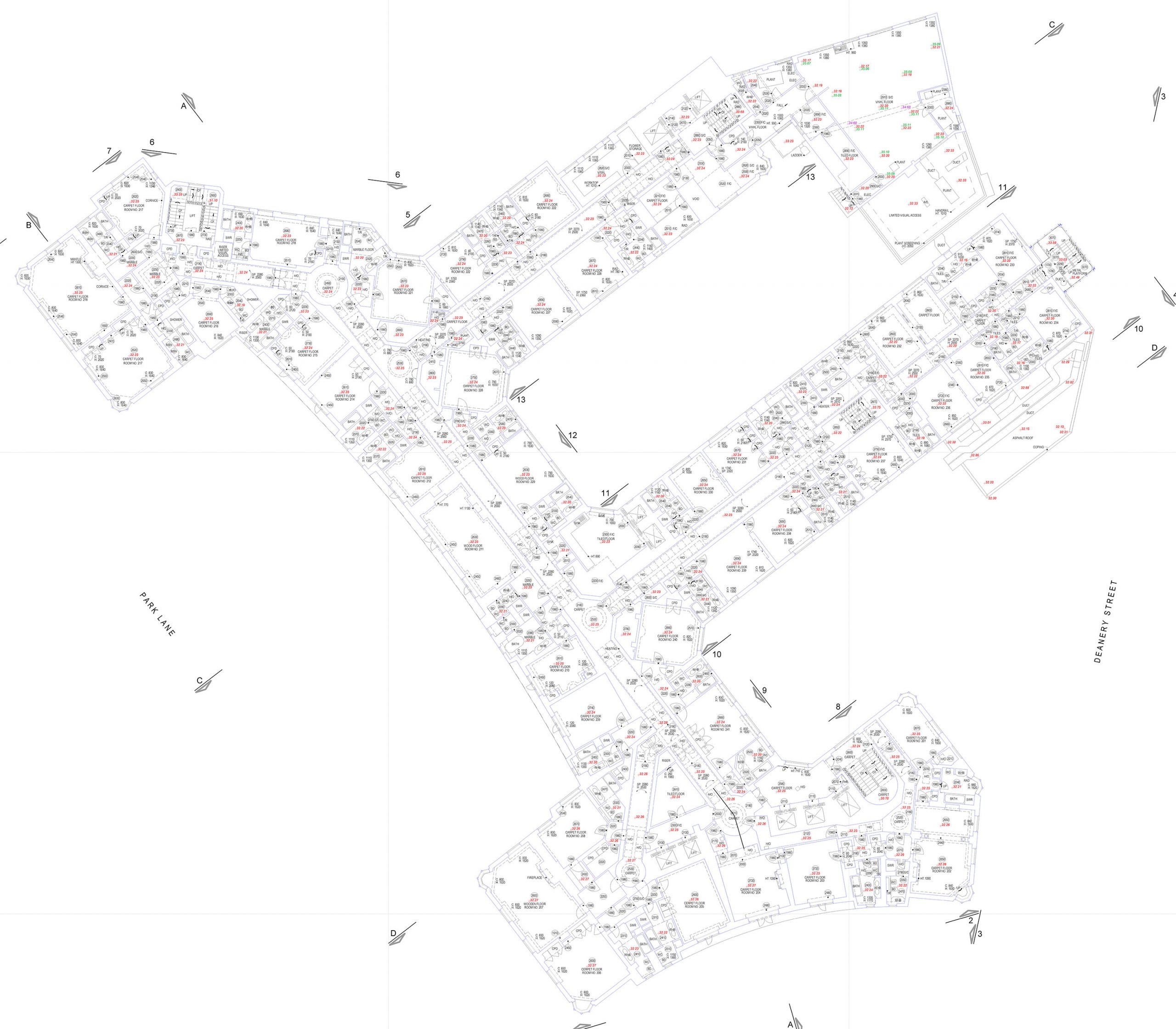Our clients may require a floor plan drawing for multiple reasons; it may be required for planning applications, as-built verification surveys, area referencing measurement, space planning, lease plan, licensing, party wall & fire drawing purposes.
At Michael Gallie & Partners, we advise our clients on what floor plan drawing scale they should instruct based upon their scope requirements and to make sure that the floor plan drawing required is fit for purpose.
What Are Typical Scales & What Purposes Are They Used For?
- 1:200 Scale – Lease Plans, Fire Plans & Licensing Plans
- 1:100 Scale – Standard Floor Plans, Area Referencing & Planning Drawings
- 1:50 Scale – Detailed Floor Plans, Interior Design & Heritage Recording Surveys
- 1:20 Scale – Interior Design, Engineering Surveys & Heritage Recording Surveys
- 1:5 Scale – Engineering Surveys, Heritage Recording Surveys & MEP Plans
Is Survey Accuracy Affected Depending on Floor Plan Scale Used?
The simple answer is No. For example, we would show a building corner position on a floor plan drawing at the same survey accuracy whether it was a 1:200 Scale or 1:5 Scale. The only difference between all the scales is that there is a sliding scale on the level of detail shown on each, with 1:5 Scale floor plan drawings showing the most amount of detail up to 1:200 Scale floor plan drawings showing the least amount of detail. At Michael Gallie & Partners, survey accuracy is never compromised.
Michael Gallie & Partners are regulated by the RICS and have industry-leading £10 million Professional Indemnity insurance cover. If you need any advice, please contact Sam Lloyd at Michael Gallie & Partners who will be happy to assist you in this matter.


